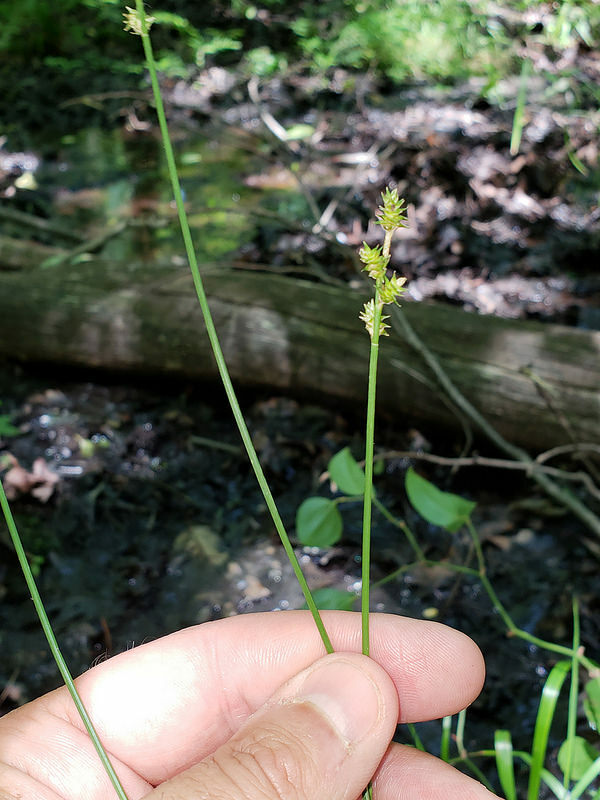Map Snapshot




















81 Records
Status
The subspecies atlantica and capillacea are present in the state (Frye & Lea).
Seasonality Snapshot
Use of media featured on Maryland Biodiversity Project is only permitted with express permission of the photographer.
Prickly Bog Sedge in Anne Arundel Co., Maryland (6/1/2014).
Media by
Jim Brighton.
Prickly Bog Sedge in Cecil Co., Maryland (6/23/2014).
Media by
Jim Brighton.
Prickly Bog Sedge in Garrett Co., Maryland (6/1/2014).
Media by
Jim Brighton.
Prickly Bog Sedge in Anne Arundel Co., Maryland (6/16/2018). Determined by Rod Simmons.
View Record Details
Media by
Bill Hubick.
Source: Wikipedia
| Carex atlantica | |
|---|---|

| |

| |
| Botanical illustration | |
| Scientific classification | |
| Kingdom: | Plantae |
| Clade: | Tracheophytes |
| Clade: | Angiosperms |
| Clade: | Monocots |
| Clade: | Commelinids |
| Order: | Poales |
| Family: | Cyperaceae |
| Genus: | Carex |
| Species: | C. atlantica
|
| Binomial name | |
| Carex atlantica | |
| Synonyms[2] | |
|
List
| |
Carex atlantica, the prickly bog sedge, is a species of a flowering plant in the family Cyperaceae, native to eastern North America, and eastern Hispaniola.[2][3] It is usually found growing in bogs or acidic seeps.[4]
Subtaxa
[edit]The following subspecies are currently accepted:[2]
- Carex atlantica subsp. atlantica – Entire range, except Ontario, Québec, Vermont, and the Dominican Republic
- Carex atlantica subsp. capillacea (L.H.Bailey) Reznicek – Entire range, except West Virginia
References
[edit]- ^ Lansdown, R.V. (2016). "Carex atlantica". IUCN Red List of Threatened Species. 2016: e.T64270175A67728699. doi:10.2305/IUCN.UK.2016-1.RLTS.T64270175A67728699.en. Retrieved 1 November 2022.
- ^ a b c "Carex atlantica L.H.Bailey". Plants of the World Online. Board of Trustees of the Royal Botanic Gardens, Kew. 2017. Retrieved 9 March 2022.
- ^ GBIF Backbone Taxonomy. "Carex atlantica L.H.Bailey". gbif.org. GBIF Secretariat. Retrieved 9 March 2022.
- ^ Orzell, Steve L.; Bridges, Edwin L. (1989). "Noteworthy Carex L. (Cyperaceae: Section Stellulatae) Collections from Missouri". SIDA, Contributions to Botany. 13 (3): 380–383. JSTOR 41967503.




